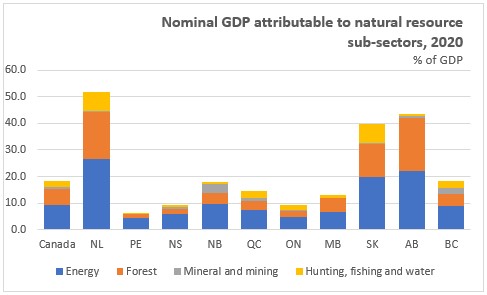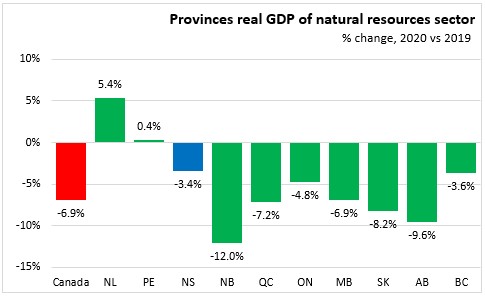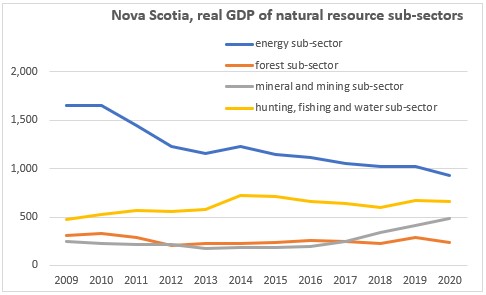The Economics and Statistics Division maintains archives of previous publications for accountability purposes, but makes no updates to keep these documents current with the latest data revisions from Statistics Canada. As a result, information in older documents may not be accurate. Please exercise caution when referring to older documents. For the latest information and historical data, please contact the individual listed to the right.
<--- Return to Archive
For additional information relating to this article, please contact:
May 27, 2022NATURAL RESOURCE INDICATORS, 2020 PROVINCIAL AND TERRITORIAL NATURAL RESOURCE INDICATORS, 2020
Statistics Canada has produced Provincial and Territorial Natural Resource Indicators (PTNRI) as an extension to the Natural Resources Satellite Account. The account defines natural resource activities as products and services originating from naturally occurring assets used in economic activity. The assets include mineral and energy resources, water, natural timber, aquatic and other natural biological resources but not agriculture. The indicators are built on the production/activity of the natural resource (including associated primary manufacturing) and not on an industry classification. The natural resource indicators include production, GDP, imports, exports, and employment.
The natural resources sector accounted for 18.3% of national GDP in 2020. The natural resource sector accounted for approximately 50% of the economy of Newfoundland and Labrador, and around 40% for Saskatchewan and Alberta, and approximately 6% of GDP in Prince Edward Island. In Nova Scotia, the natural resource sector accounted for 9.4% of GDP in 2020 with contributions among the sub-sectors of energy (5.9%), forest (2.0%), mineral and mining (0.7%) and hunting, fishing and water (0.9%).

Nationally, natural resources real GDP declined 6.9% in 2020. Natural resources real GDP declined in all provinces except Newfoundland and Labrador (+5.4%) and Prince Edward Island (+0.4%). The largest decrease was in New Brunswick (-12.0%) followed by Alberta (-9.6%).

Nova Scotia natural resources real GDP declined 3.4% from 2019 to 2020. The energy sub-sector has been declining since 2014. The forestry subsector saw a decline in 2020 that coincides with the closure of Northern pulp. Mineral and mining real GDP grew 17.1% in 2020 on higher metallic mineral mining. Real GDP from the hunting, fishing and water subsector declined 1.0% in 2020. Since 2009, real GDP from Nova Scotia's mineral and mining sub-sector has grown 96.4% while the hunting, fishing and water sub-sector has grown 40.1%.

Source: Statistics Canada: Table 36-10-0624-01 Provincial and territorial natural resource indicators, Natural resources sector (main indicators) (x 1,000,000)
Table 36-10-0222-01 Gross domestic product, expenditure-based, provincial and territorial, annual (x 1,000,000)
<--- Return to Archive